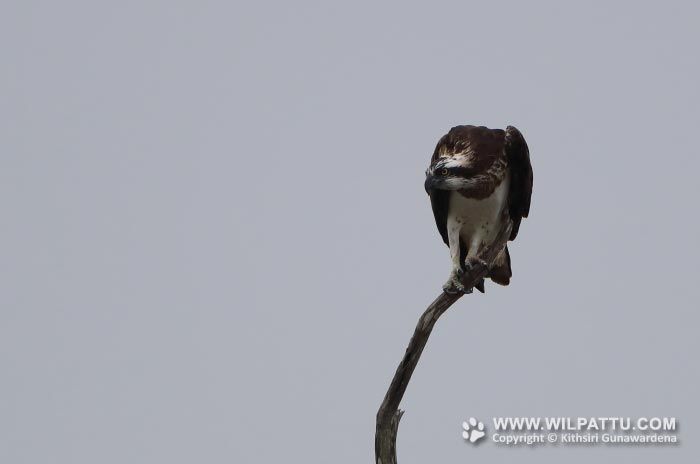
Birds ‹‹ Go Back
This unique raptor is a rare but regular winter visitor to the dry coastal lagoons and estuaries of the country. Occasionally it may visit inland sheets of water. Four subspecies have been recognized. P.h. haliaetus, which is the nominate subspecies occurring in the Palearctic region and the race that winters in Sri Lanka. P.h. carolinensis is found in North America, P.h. Ridgwayi in the Caribbean Islands and P.h cristatus found in Australia and Tasmania. The last two races are non migratory.
The conservation status of this species is regarded as Least Concerned (IUCN Red List).
This is a species protected under the Fauna and Flora Protection Ordinance as amended by Act No. 22 of 2009.
Osprey is one of the most widely distributed bird species in the world found in all continents except Antarctica. Among raptors its distribution is only second to the Peregrine Falcon. This raptor is known to subsist exclusively on fish. It’s method of capturing and transporting its prey is unique. Upon locating a fish the Osprey would plunge in to the water feet first unlike most other fish eating raptors that would cease the fish on the wing. Moments later it would emerge, usually with a large fish in its talons and would fly up exhibiting amazing strength. Upon being air born this unique hunter would hold the fish head first to reduce wind resistance. I have seen this species at Nawadankulama and at Bundala National park.
On the 2nd of March 2019 I observed a raptor perched on a dead tree stump in the middle of Maha Wewa which looked different from the usual Grey–headed Fish Eagles and White-bellied Sea Eagles seen at this locality. Can it be an Osprey, I thought, as I hurriedly grabbed my Binoculars? To my pleasant surprise it was indeed a beautiful specimen of an Osprey. Other than being a rare migrant this species is usually known to occur in the coastal areas of the country. There had been no record of this species ever from the park. This location in Wilpattu, on a direct line, is about 30KM from the coast. I observed and photographed this species in December same year and again on the 7th of March in 2020 at the same location.



